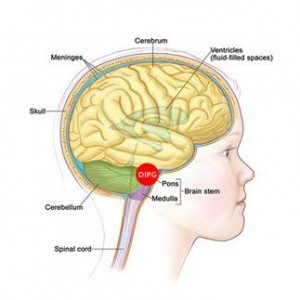The type of brain tumour that killed Yellowknife boy Malcolm Austin remains one of the most dangerous, and least understood, forms of cancer.
That’s the view of the Brain Tumour Foundation of Canada, which provides support to brain tumour patients and funding for research.
Malcolm passed away this week, having been diagnosed with diffuse intrinsic pontine glioma – or DIPG – in October 2014.
DIPG has a reported zero percent survival rate. Fewer than 10 percent of children survive two years from diagnosis.
Read: Yellowknife grieves as six-year-old Malcolm Austin passes away
Janic Gorayeb, a health information specialist at the foundation, told Moose FM this form of cancer is exceptionally difficult to both treat and study because of its location inside the brain.
“It presents at six or seven years old with mild neurological symptoms and it affects the brain stem and the nervous system,” said Gorayeb.

“This area of the brain affects swallowing, balance, vision – the child may have difficulties with chewing. Because it is a very rapid, fast-growing tumour, the symptoms may worsen quite quickly as well.
“It’s very difficult for a medical team to do surgery on a child to remove the tumour, because it’s so difficult to access. And because it’s so difficult to access, biopsy tissues are rarely acquired – so we don’t even know a lot around the genetic landscape of DIPG.”
There are more than 120 forms of brain cancer, but DIPG remains one of the most aggressive – and least likely. The cancer affects only children and there are around 30 cases in Canada each year.
“I’ve been with the foundation for seven years and this is the second time I’ve come across it,” said Gorayeb.
“Unlike other pediatric cancers, there has been little progress in improving treatments and cure rates for this type of cancer. The failure of most therapies for this cancer can be attributed to its delicate location.
“It’s similar to glioblastoma multiforme, which is the most aggressive form of adult brain tumour.”
More information: Brain Tumour Foundation of Canada
There have been some limited breakthroughs in healthcare professionals’ understanding of DIPG.
In April 2014, Toronto pediatric hospital SickKids published a study uncovering the genetic drivers of DIPG and identifying three separate forms of the cancer. The genes uncovered in that research had never been seen in any other cancer.
Researchers at SickKids are now exploring what forms of therapy might work in future treatments for DIPG.




